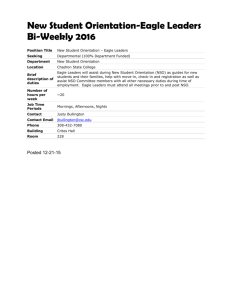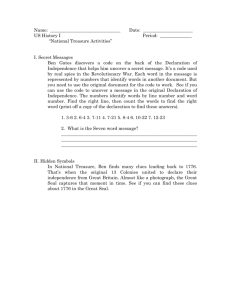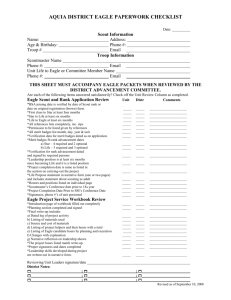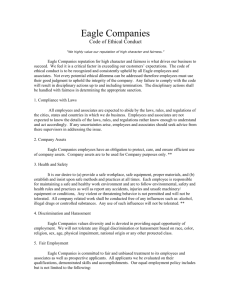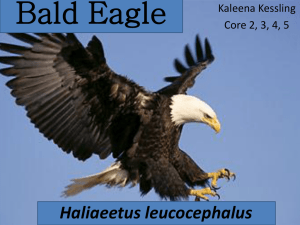Post-Lesson Grades 4-6
advertisement
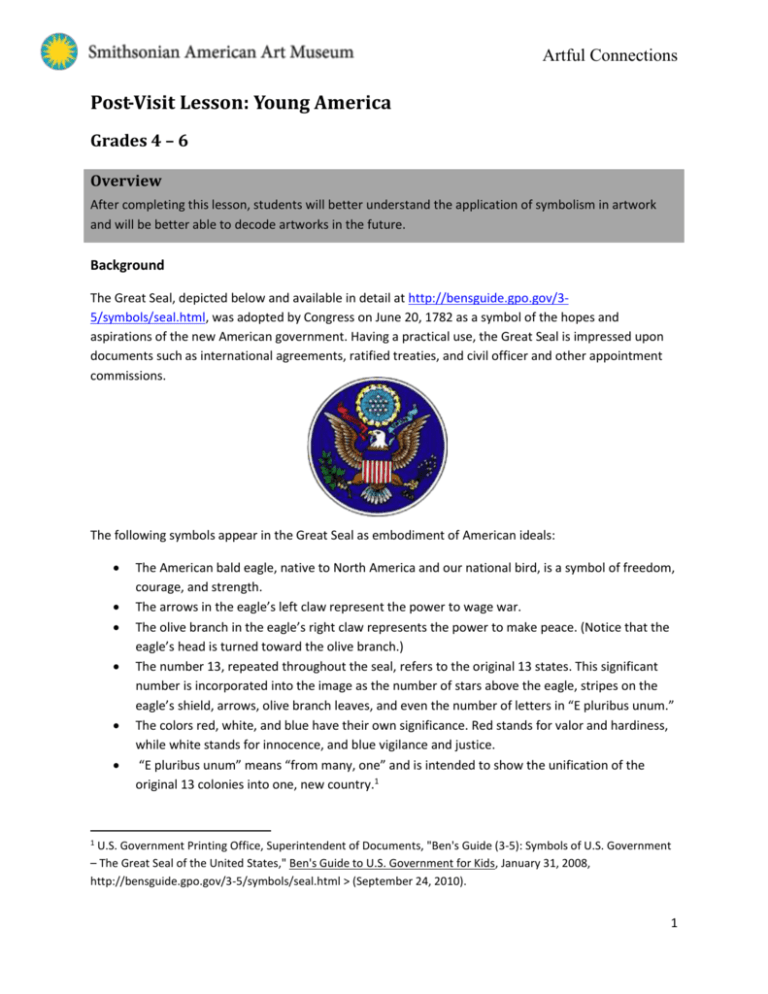
Artful Connections Post-Visit Lesson: Young America Grades 4 – 6 Overview After completing this lesson, students will better understand the application of symbolism in artwork and will be better able to decode artworks in the future. Background The Great Seal, depicted below and available in detail at http://bensguide.gpo.gov/35/symbols/seal.html, was adopted by Congress on June 20, 1782 as a symbol of the hopes and aspirations of the new American government. Having a practical use, the Great Seal is impressed upon documents such as international agreements, ratified treaties, and civil officer and other appointment commissions. The following symbols appear in the Great Seal as embodiment of American ideals: The American bald eagle, native to North America and our national bird, is a symbol of freedom, courage, and strength. The arrows in the eagle’s left claw represent the power to wage war. The olive branch in the eagle’s right claw represents the power to make peace. (Notice that the eagle’s head is turned toward the olive branch.) The number 13, repeated throughout the seal, refers to the original 13 states. This significant number is incorporated into the image as the number of stars above the eagle, stripes on the eagle’s shield, arrows, olive branch leaves, and even the number of letters in “E pluribus unum.” The colors red, white, and blue have their own significance. Red stands for valor and hardiness, while white stands for innocence, and blue vigilance and justice. “E pluribus unum” means “from many, one” and is intended to show the unification of the original 13 colonies into one, new country.1 1 U.S. Government Printing Office, Superintendent of Documents, "Ben's Guide (3-5): Symbols of U.S. Government – The Great Seal of the United States," Ben's Guide to U.S. Government for Kids, January 31, 2008, http://bensguide.gpo.gov/3-5/symbols/seal.html > (September 24, 2010). 1 Artful Connections Discussion Have students compare and contrast the Great Seal with Paul Manship’s John F. Kennedy Inaugural Medal (Galvano of reverse). Discuss the symbolism of the common elements, those that appear in both images. Encourage discussion by asking the following questions: Why do you think an eagle is depicted on the Great Seal? How many stars can you count in the sky above the eagle? How many stripes are on the eagle’s shield? Why is 13 an important number for the United States? Have students compare the John F. Kennedy Inaugural Medal (Galvano of reverse) to American Eagle Pin and National Defense Badge of Service Pin. Which symbols do you see in all three of the artworks? What differences do you notice among the three artworks? Explain that the olive branch clasped in the talon of the eagle on the Great Seal is a biblical symbol of peace and the crown of laurels ringing the American Eagle Pin is a mythological symbol of victory. Who do you think might wear the American Eagle Pin? Why might the symbol of victory be important to that person? Activity Have students develop a seal for your classroom or school by discussing important aspects and principles of your school or classroom. Have students list two to three symbolic images it might contain and vote for the one they think is most appropriate – the “classroom symbol.” Have students work independently to develop their own seals that incorporate the agreed-upon classroom symbol. Once finished, have students compare their work and discuss differences in artistic vision and symbolism. 2 Artful Connections Paul Manship John F. Kennedy Inaugural Medal (Galvano of reverse) 1961 1966.47.114 3 Artful Connections Anthony de Francisci American Eagle Pin ca. 1922? 1966.51.77 4 Artful Connections Anthony de Francisci National Defense Badge of Service Pin ca. 1925 1966.110.17 5
